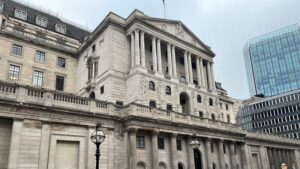The background for the market has been challenging. Widespread risk-off contagion following Russia’s invasion of Ukraine caused a widening of credit spreads, although much of that move was reversed with a solid rally into quarter-end as broader risk sentiment settled.
Among high-yield issuers, the backdrop of rising commodity prices benefited bond prices in the energy sector, while higher inflation and rising interest rates weighed on issuers in the consumer products, food and real estate sectors.
But where are the less obvious pockets of opportunity?
Well, what we have seen more broadly, amid the backdrop of credit spread widening, is that higher quality parts of the credit market have – somewhat unusually – underperformed, due to a combination of duration aversion in a rising rate environment and market technical dynamics. This has resulted in compelling valuations in some higher-quality market segments.
During periods characterised by a widening of credit spreads, credit investors typically see higher quality segments of the market outperform lower-rated areas on a risk-adjusted basis. In Q1, we saw the opposite occur, resulting in attractively valued opportunities in the higher-quality end of the credit rating spectrum which investors would do well to take advantage of moving forward.
BB rated debt particularly cheap compared to CCC rated debt
In our view, a large part of the underperformance of the quality factor can be attributed to two key drivers: duration aversion and liquidity/fund flow technicals.
Regarding the former, quality segments of credit tend to be longer duration and these markets have naturally seen both lower demand and a bigger price impact of rising government bond yields, given the hawkish backdrop for central bank policy.
As for liquidity/fund flow technicals, most credit markets have experienced outflows this year and quality segments of credit markets, particularly BB rated high-yield debt, tend to be used as cash sources for fund raising, given their greater liquidity. This technical dynamic is typically most pronounced for those bonds that are also included in popular high yield ETFs.
In high-yield, BB rated debt is the highest quality segment of the market and appears particularly cheap relative to the riskiest credit segment, CCC rated debt.
The extra risk premium investors can earn from owning CCC rated debt relative to BB rated debt – as measured by the spread ratio – remains very compressed, sitting well below the average level seen over the past 10 years.
Given the uncertainty regarding the path of inflation, central bank tightening and the corresponding impact on growth, we believe that BB rated companies are better positioned to deal with these headwinds as they tend to have cleaner balance sheets and greater scale compared to CCC rated companies.
All of this points to a picture of attractive risk-adjusted valuations for BB rated debt, with CCC rated debt presenting a poor level of compensation for the apparent risks to the economy and markets.
Prices don’t reflect divergences in cyclicality or margin pressure
While we expect near-term credit stresses to remain subdued given the current strength of corporate balance sheets, we believe that dispersion between sectors should increase meaningfully in this environment. While signs of increased dispersion are emerging, we believe that today’s pricing does not adequately reflect the divergences in cyclicality or margin pressure that different industries and companies face.
For example, we have seen some historically defensive sectors, such as telecoms, counterintuitively underperform in the recent sell-off owing to the liquidity/flow technical dynamics mentioned earlier rather than any fundamental reasons, making them a compelling investment despite recent underperformance.
Similarly investment-grade debt suffered underperformance in Q1 and was one of the worst performing credit asset classes, with the Global Investment-grade Index returning -6.9% in the quarter.
Regardless, the opportunity for investment remains.
The underperformance on a total return basis, all-in yields for investment-grade remain attractive and the drive for quality should continue to be a focus for investors. The investment-grade market remains wide open, we believe we may continue to see companies issue opportunistic deals to lock in yields ahead of further potential volatility in rates.
As a result of these recent market dynamics, we believe that moving up the quality spectrum looks particularly compelling for credit investors, particularly given the range of possible outcomes at this juncture. If credit spreads continue to move wider, higher-quality assets should be more defensive owing to their stronger fundamentals.
Equally, if spreads move tighter, these quality assets – which appear oversold – are in our view, most likely to bounce. Therefore, although recent performance casts them in an unattractive light, if investors are selective on quality bonds there are opportunities to be had.
This article was written for Portfolio Adviser by Jeff Boswell, head of alternative credit as Ninety One.







